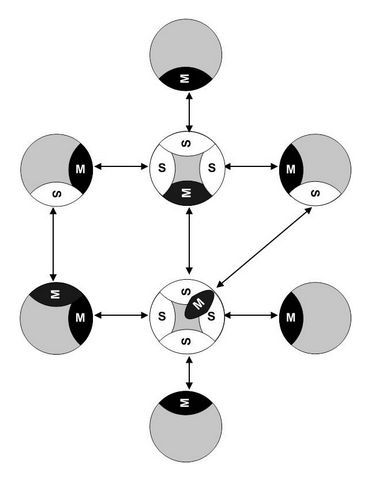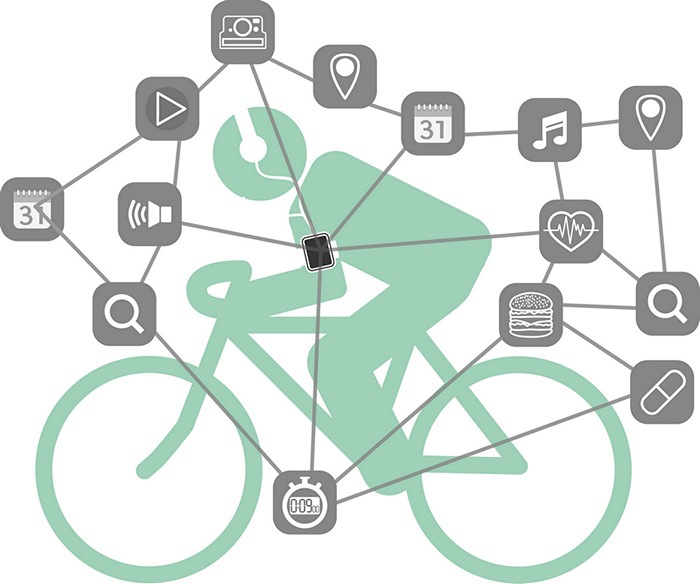ANT +

Today, the two main dominant trends are the development of wearable electronics and the Internet of things. The world is conquered by fitness trackers and smartwatches, and home appliances, which are completely mundane and simple in their purpose, acquire unprecedented capabilities and their own IP. Previously, we were attracted by the fact of connecting to the network, and the development of gadgets was subordinated to the idea of improving communication methods. Today, a new era is coming: we are turning into centers of tiny networks named after ourselves. We begin to surround ourselves with devices that register our physical state, moving in space and a type of activity, creating round-the-clock logs of our being. Our homes are gradually filled with appliances and devices that can (and should) be controlled remotely and centrally. As a result, the smartphone will become increasingly important as a kind of center where information flows from all sorts of trackers, sensors, smart lights and other numerous high-tech satellites. It is obvious that in these conditions a certain common communication protocol is necessary. And one of the most promising applicants for this role is the ANT + protocol, implemented in YotaPhone 2.
What is ANT +
 This is a proprietary protocol designed to exchange data with sensors in the near zone. Mainly:
This is a proprietary protocol designed to exchange data with sensors in the near zone. Mainly:- heart rate sensors,
- speed sensors
- pedometers,
- calorie counters
- blood pressure sensors
- Libra,
- temperature sensors and more.
For this, the mobile device (smartphone, tablet, smart watch, bike computer, etc.) must be equipped with a wireless communication module that supports transmission via the ANT + protocol. In YotaPhone, the WCN3680 chip from Qualcomm is responsible for this. Data is transmitted at 2.4 GHz, in the ISM band (Industrial, Scientific, Medical - industrial, scientific, medical), using the same bandwidth as Bluetooth. The range of communication using the ANT + protocol is on average 30 m.
')
ANT + is an adaptive synchronous protocol. The ANT + network consists of logical connections between two nodes. Inside each connection, one node is master, and the other is slave. However, the same slave may be master with respect to another node with which it makes a different logical connection. In an ANT network, any node can connect to any node.

Logical diagram of the operation of the protocol ANT in Android:

Bluetooth Comparison
Given the overall frequency and bandwidth, what makes ANT + and Bluetooth different?
- Different package structure.
- Different number of channels: ANT + - 83 (chip WCN3680 supports 79), Bluetooth Low Energy - 40.
- Different interval between channels: ANT + - 1 Hz, Bluetooth LE — 2 Hz.
- Different range of reception: ANT + - 30 m, Bluetooth LE - 50 m.
However, all these differences do not answer the question: why do we need ANT + if there is Bluetooth? It's all about power consumption. In this regard, ANT + shows good results: some mobile devices can work for about a year on a single battery charge. If we compare ANT + and Bluetooth Smart, then:
- They have the same energy consumption in sleep and active modes.
- ANT + consumes less when advertising a service.
- ANT + consumes less when scanning and initiating a communication session.
- ANT + requires less transaction for each stage of communication.
- When sending a single volume of data, ANT + sends less additional information.
The energy savings for each of these items is not great, but in total there is more than a significant difference: ANT + is 25-50% more energy efficient than Bluetooth Smart.
This protocol has a number of other advantages. For example, due to the different network topology, ANT + allows you to implement many more user connection scenarios. In addition, ANT + for Android allows you to simultaneously run several independent applications using a single communication module.
Conclusion

Despite the proprietary nature of the protocol itself, the number and composition of external devices connecting to the gadget is unlimited. Is that the number of radio frequency channels. That is, you can simultaneously receive information from a variety of sensors, depending on the problem being solved. At the moment, this mainly relates to sports and physical activity, but with the development of the Internet of things we can expect a significant expansion of the range of connected devices. For example, now ANT + allows you to control music playback, receive information from gas and torque sensors on a motorcycle, as well as navigation data from GPS devices.
Source: https://habr.com/ru/post/250117/
All Articles